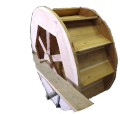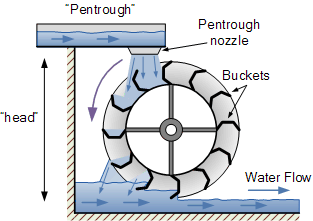
 3
3





 7
7




 2
2




 1
1




If there is one thing the Wizard of Oz has taught me, it is not to trust school teachers on bicycles.
 2
2








 3
3




 1
1




 2
2




 1
1





 1
1




 2
2




US Department of Energy website wrote:To see if a microhydropower system would work for you, you will want to determine the amount of power that you can obtain from the flowing water on your site. This involves determining these two things:
Head -- the vertical distance the water falls
Flow -- the quantity of water falling.
Once you've calculated the head and flow, then you can use a simple equation to estimate the power output for a system with 53% efficiency, which is representative of most microhydropower systems.
Simply multiply net head (the vertical distance available after subtracting losses from pipe friction) by flow (use U.S. gallons per minute) divided by 10. That will give you the system's output in watts (W). The equation looks this:
[net head (feet) × flow (gpm)] ÷ 10 = W




 6
6




 1
1





|
It is difficult to free fools from the chains they revere - Voltaire. tiny ad:
A book about better recipes for green living
https://greenlivingbook.com/
|





